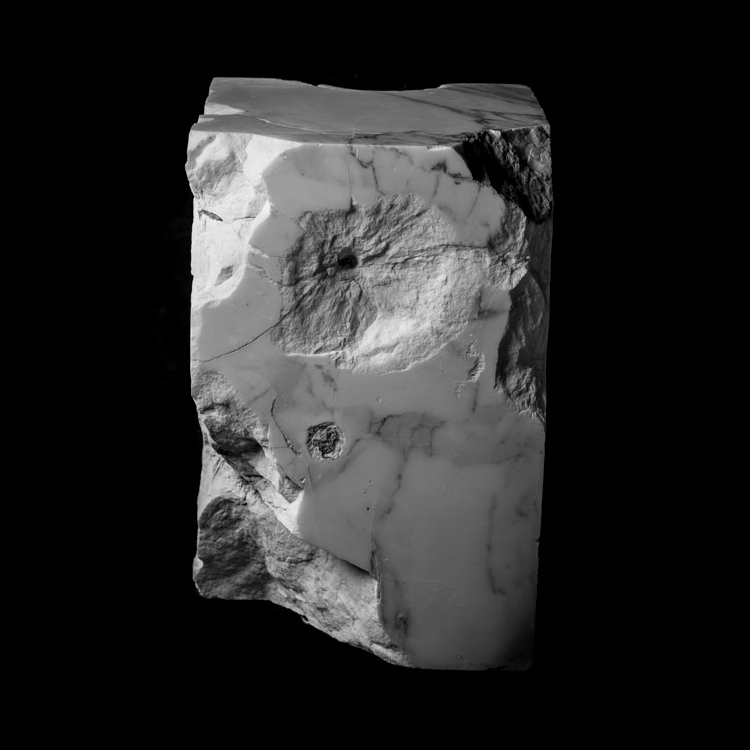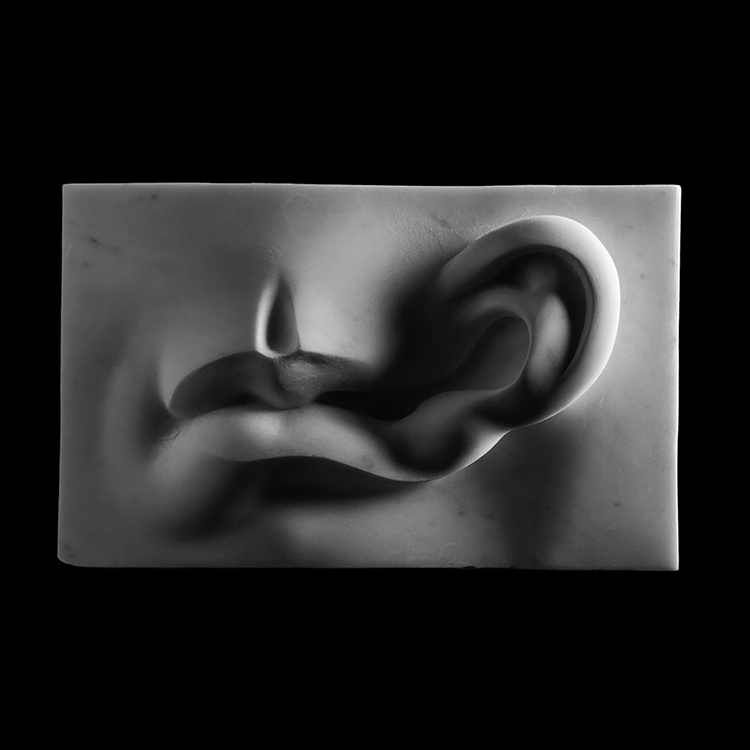Reconciling Beauty and Destruction Through Sculpture
Majalla
April 2017
Tell us a bit about yourself.
I am originally Iraqi, I grew up in Italy, I have a Dutch passport, and I live in Belgium. So this gives you an idea about my identity crisis. I am also a sculptor and a professor of Sculpture at the Royal Academy of Fine Arts in Antwerp. Since this year I have additionally started working on a PHD in the arts.
What inspires your artwork?
Everything that surrounds us. What interests me most is the human condition. Confronting oneself with death, transience, the violence that we instigate onto one another, the violence of nature. Nature instigates violence onto our heritage for example. Entropy is a theme that is very important to me. That is the theory that everything tends to decay sooner or later, in one way or the other.
Tell us more about the pieces you are currently showcasing at the “Disclosing the Uncanny” exhibition.
I try to incorporate the ideas I have just mentioned into my artwork. It is still not obvious how confrontation with death, with the violence that we see all around us and with entropy can be achieved through figurative sculpture. So I have tried to develop a sculpture language that takes into account all the developments of the human deformations. Coming from the classical sculpture tradition but then going to Goya, Bacon, Picasso and even performance artists. And I am trying to use deformations and strange combinations of body parts in order to talk about the anxieties that we experience. Lately, I have been also developing new methods and ways of working with sculptures to address the topics of violence and mortality. I have been sandblasting and shooting at the sculptures with bullets. I also work with acids. So, actually, I have been ruining the sculptures myself.
Would you describe your work as cynical?
I would describe my work as very serious. It is very heavy work, very straightforward, to the point. I like to show things as they are. But I have never thought of it as cynical.
What is your typical process like when it comes to sculpture? The pieces manifest an interesting relationship between creation and destruction.
They are improvised pieces, most of them. I just start carving, and then I see what happens. But of course, I have a database of images; very violent, strong images. I have broken sculptures as an inspiration, but also everything that implies deformation. Disease, victims of wars, injuries. I am also inspired by other disciplines like music. I love “dissonances” and what they represent. Somehow, I see deformations of body parts just as dissonances in harmony and music. They play with the status quo; the normal, peaceful order of things. I like to add something to the normal order that causes disruption. My work additionally relates to displacement and identity.
But also, if you think about it, sculpture making is in itself very violent. The action entails carving with a heavy hammer and a sharp chisel and hitting a block of marble for hours and hours until you get this beautiful shape out of it. It is a very paradoxical situation. Sometimes I feel like a butcher, obsessed with this action. So, I thought why not apply other techniques that are also violent? The definition of sculpture is removing material from a block of stone. Why not develop new ways of removal that might also refer to other things? Why not shoot the sculpture with bullets? Why not throw it from buildings? This references the practices of ISIS for example. Not only that of course. I do not want to merely produce work in that direction. But what comes out of implementing these different methods is that I am able to address several topics simultaneously while making the overall outcome richer.
You referenced earlier on experiencing an “identity crisis,” and I was wondering whether you think that translates onto your artwork?
Yes, it does. For example, in this exhibition you have faces missing eyes. They are contorted, turned around, upside down. You have many elements in illogical places, as if they are in search of their own place in society or in anatomy.
How do you think your artwork relates to the work of Hanne Friis, the other artist in the exhibition?
It is a great combination. I think it was a very bold curatorial decision. On one hand you have the soft, feminine and colorful and on the other hand you have the hard, aggressive, and maybe masculine. So they really complemented each other.
In your opinion, what is the role of the artist in society?
I think it is making people aware of their situation. The artist should tell you what is wrong with society. Like a philosopher almost.
Which artist has had the greatest influence on your work?
Actually, I get more inspired by different disciplines. I would rather not mention sculptors or painters. I like music a lot. Music is very important to me. And there are a few names. I love John Coltrane, especially in his last period. He was getting very free and spiritual in his work. And he was also addressing topics like anxiety, pain, and the violence of music. There is also Bach, of course. André Tarkovski, Francis Bacon to say a few names..
Can you name one artist from the Middle Eastern contemporary art scene that you find particularly remarkable?
I like Khalid Jarrar, the Palestinian artist. He has this work where he goes to Palestine and takes away concrete from the apartheid wall and then shapes it into other things like a ball, or a teddy bear. It is very interesting how he uses material that already has so much meaning in itself and then makes something else out of it. I also love the work of Iman Qureshi- especially in light of his use of beautiful aesthetic to portray something very violent. In one of his works for example, he draws red flowers on a square in a very strong and beautiful red, but then if you look at the work from a distance it looks like blood. Only when you get really close to it do you realize that what you see are actually flowers.
You have participated in Art Dubai recently. Can you share with us some of your impressions?
I really liked Art Dubai. Not so much for the fair itself- you know, the booths and the galleries- but more because of the discussions that took place around the fair: the global talks, the global art forum, the panel talks.. They are very interesting. People have this perception of an art fair as something very commercial (as a place where you go to buy and go home). But in Dubai you have a real dialogue taking place. There is a lot of knowledge being exchanged between scholars, artists, critics and collectors. It really is on point, especially in this timing with the Middle East in crisis.
Did you find that there was an adequate level of public engagement?
I think that art fairs can be a bit of a bubble. There are usually the same groups of people attending. They are very interesting people; the collectors, the critics, the curators, the directors, the scholars. So if you mean that with public then yes there was enough engagement. I do not know how much engagement there was in terms of the locals, the citizens of Dubai. But that is something you can see everywhere.
Is there anything you dislike about the current state of the art world?
Yes. A lot. And I hope I am not generalizing. But I think that especially in the Western world there is a lack of seriousness. Often, there is no real message. A lot of it is also very elitist. I get sick myself when I read some texts about art written by pseudo intellectuals. You see the same words being constantly repeated; the same difficult, unreadable texts that are made for just a small, specific group of people. At the end you do not know what the artwork is about. You do not find any relation between what you just read about the work, and the work itself. So it becomes very intellectualized. And do not get me wrong, art needs to be intellectualized. But not just for the sake of it. It becomes very elitist, whereas art should be for everybody.
Share article
































